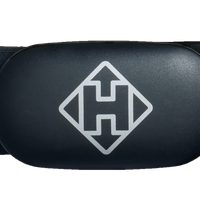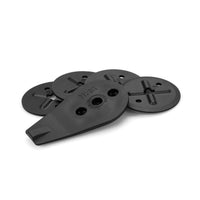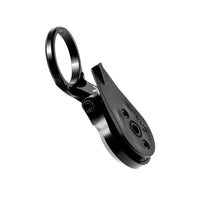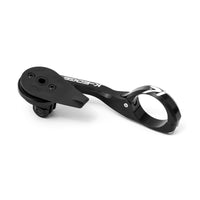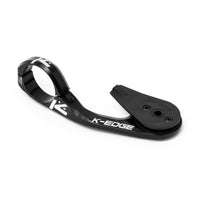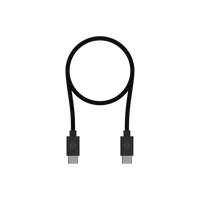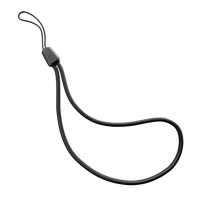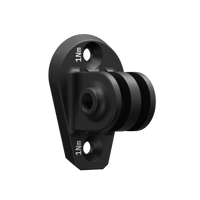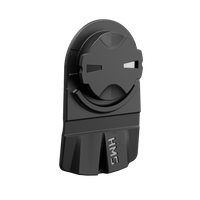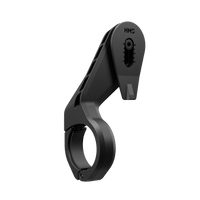Late December, 2017: Caffery (Director of Communications) and Laurence (SVP of Product) take a spin when temperatures climbed up to 27ºF/-3ºC – the warmest day we’d had in three weeks! Prospect Park, Brooklyn, NY, USA.
We always (try to) ride year-round, and so can you.
Winter can be a brutal time of year for cycling. Much of North America, in fact, has been experiencing a more intense winter than we’ve been used to in recent years. Consistent sub-freezing temperatures, limited daylight, horrible road and trail conditions, and biting winds can quickly separate the bold from the meek — or simply, the sane from the less-so.
While Karoo can handle virtually any weather — and will have your data, training, and navigation needs covered — you, the rider, will need to prepare accordingly. While we’re not scientists or professional journalists, we do have some wintertime riding tips we use when tackling the nastiest weather of the year that we wanted to share. We hope they help you get out there!
1. Layer the core.
This is where the battle against the cold starts and ends. Your core is where your heat is generated, and within reason, adequate heat in the core can go a long way to maintaining your overall comfort, even in incredibly cold conditions. To sacrifice here is often irrecoverable.

Riding off-road in the winter will call for slightly different recommendations than the road-oriented advice we’ve given here. For example, for off-the-bike traction, we’d recommend wearing winter boots in the coldest conditions, which means you’ll probably want to remove any clipless pedals, too.
The actual layering strategy and material you use in protecting your core comes down to an individual’s preferences – the same temperature may necessitate three base layers from one rider, while another is okay with just one – but we can say one think for sure: avoid cotton. As a base-layer, cotton is wonderful when dry, but when it soaks with sweat, it takes far too long to dry out, and the moisture can make it feel far colder than it is. Then, as a mid or outer layer, it feels okay at first, but you’ll quickly realize that it’s too permeable to the wind. In especially cold temperatures, we find this combo works best: a form-fitting, next-to-skin base layer (usually a nylon/poly blend), a merino woolen mid-layer, and then a cold-weather riding jacket.
2. Hands, feet, head, neck!
These are sometimes called your “contact points” – whether contacting with the bike or with the atmosphere. A properly protected core will go a long way in maintaining your warmth, but protecting your contact points properly is the difference between being able to comfortably ride five miles, or fifty.
Your hands need critical protection, both for your comfort, but also for safety, as after many miles you may not realize that the cold has slowly crept in and made them slow and numb, leading to a potential loss of control. Whether riding on-road or off, wearing thick, ski-type gloves is tempting, but these can rob you of dexterity that make braking or shifting difficult. We’d strongly recommend getting cycling-specific gloves from your local bike shop, which are often very warm but more dextrous, and usually have silicone grippy bits at the finger tips for shifters and brake levers.

Down at your feet, we think cycling shoe covers are a no-brainer – at least when riding with clipless pedals. They do wonders to keep the wind out, and some are even insulated. Inside, we find merino wool socks are hard to beat. Again, avoid cotton here, as they’ll be too slow to evaporate moisture and lead to cold, soggy feet.
Up top, we like cycling beanies (again, not cotton). These are designed to provide warmth, protect your ears, and fit comfortably under a helmet. When temperatures really go down, a face mask or athletic balaclava may be necessary, but make sure that these don’t impede heavy breathing.
Finally, clear-lens cycling glasses are very useful for the dimmer days of winter, since your regular dark shades may be too dark. The protection and comfort afforded by keeping the wind out of your eyes makes riding in the cold just that much more bearable.
3. Ride mid-day if possible.
This is a tough one for many, as our work schedules often dictate riding early in the morning or late in the afternoon. The difference between those 10–15 degrees that climb in the middle of the day, however, can be significant on the bike. The day’s temperature often peaks around 2–3PM, so if you can make it a late lunch ride – or if you can convince your friends to sleep in a bit on the weekends – then you’ll probably get more out of your time on the bike.
4. Keep your lights charged.
For those of us that are forced to ride early or late in the day, however, we cannot stress enough the importance of adequate lighting, particularly when riding on the road. Headlights and taillights are extremely effective at drawing the attention of motorists, often more so than any reflective gear. Very cold temperatures can strain some battery types, however, so always keep lights fully charged before a ride.

Riding off-road after the sun goes down, you’ll want lights to see. Riding on the road, you’ll want lights to be seen.
5. Avoid hot beverages before a ride.
This one is a bit counterintuitive – and we’re not scientists – but it’s advice that’s been validated to us more than once.

As tempting as it is, some hot tea before a ride isn’t always a good idea.
It’s tempting to enjoy some hot coffee or tea or whatever else before a ride, but the problem here is that these beverages actually lower your overall body temperature temporarily. The presence of the sudden warmth in your core leads to the body activating cool-down mechanisms, like dilating vessels and sometimes leading to mild sweating you might not even notice. By the time you’re outside, you may find yourself cripplingly – and confusingly – cold.
You might be thinking now: “…ergo, if one drinks cold beverages before a ride, will that help keep me warm?” We haven’t actually tried this ourselves, but if you do, we’d love go hear how it goes!
Let us know if you have any cold-weather riding advice that we haven’t tried yet, but above all, just stay safe and warm out there on the bike this winter.
Cheers,
<H>


